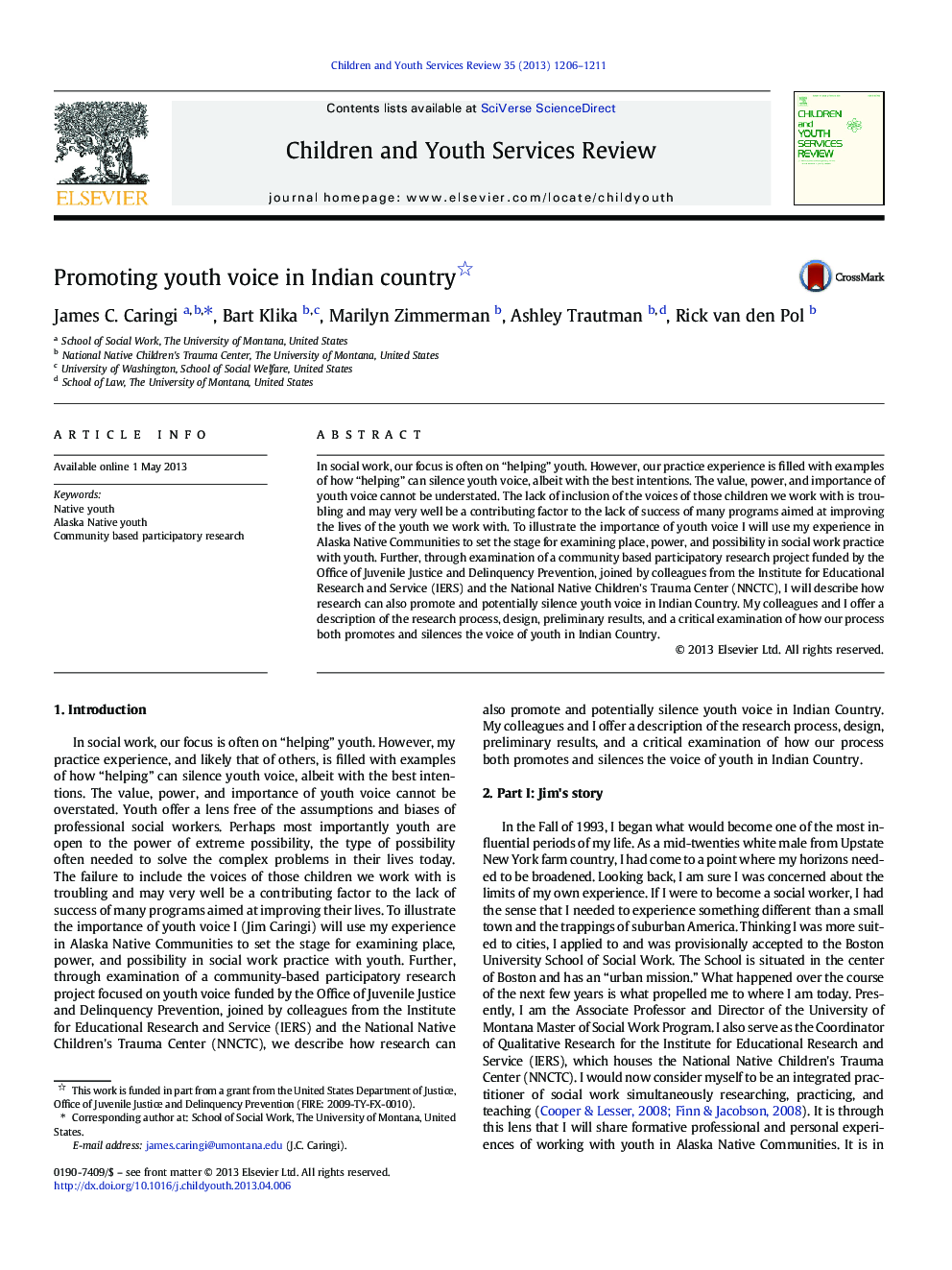| Article ID | Journal | Published Year | Pages | File Type |
|---|---|---|---|---|
| 346280 | Children and Youth Services Review | 2013 | 6 Pages |
•Thick description of practice with indigenous Alaska youth•Examination of the impact of trauma on indigenous youth•Translating social work practice to action research focused on youth voice•Limitations of the research process that inhibit youth voice•Hope for empowerment of youth voice in the action research process
In social work, our focus is often on “helping” youth. However, our practice experience is filled with examples of how “helping” can silence youth voice, albeit with the best intentions. The value, power, and importance of youth voice cannot be understated. The lack of inclusion of the voices of those children we work with is troubling and may very well be a contributing factor to the lack of success of many programs aimed at improving the lives of the youth we work with. To illustrate the importance of youth voice I will use my experience in Alaska Native Communities to set the stage for examining place, power, and possibility in social work practice with youth. Further, through examination of a community based participatory research project funded by the Office of Juvenile Justice and Delinquency Prevention, joined by colleagues from the Institute for Educational Research and Service (IERS) and the National Native Children's Trauma Center (NNCTC), I will describe how research can also promote and potentially silence youth voice in Indian Country. My colleagues and I offer a description of the research process, design, preliminary results, and a critical examination of how our process both promotes and silences the voice of youth in Indian Country.
